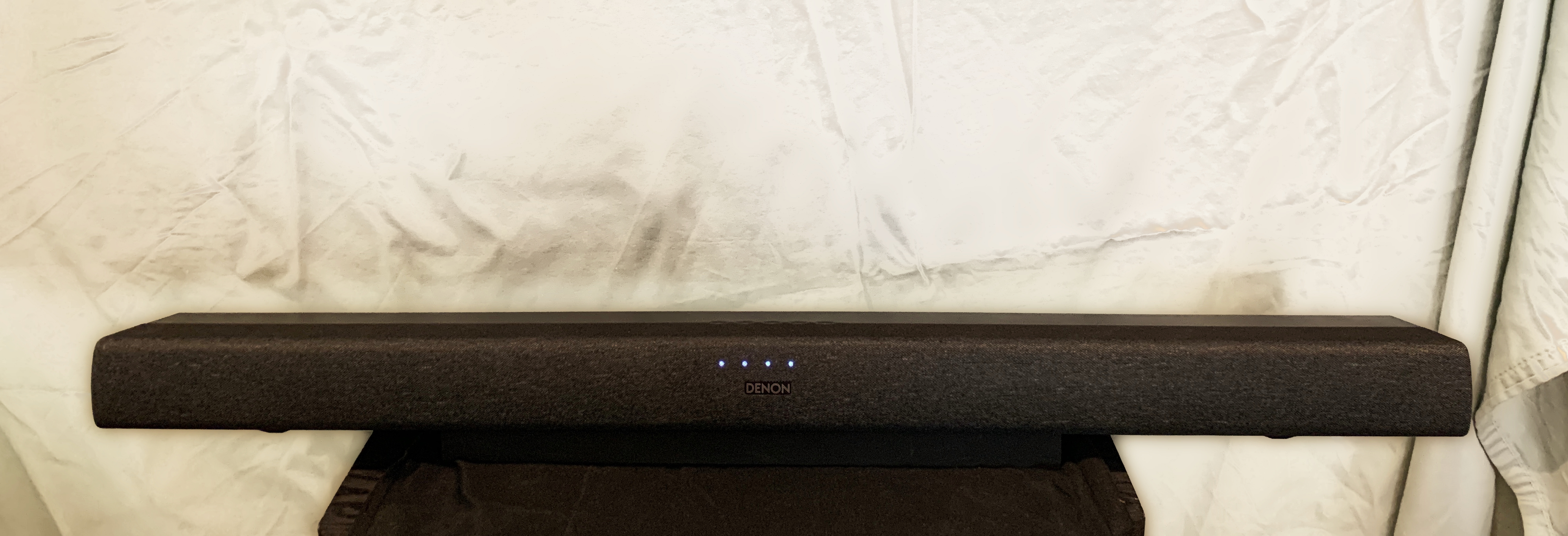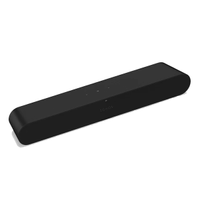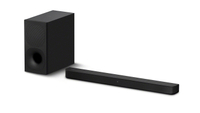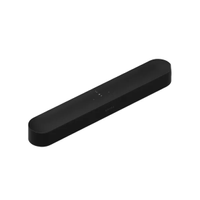TechRadar Verdict
Denon’s slim, attractive, and affordable soundbar offers a solid improvement over basic TV sound, and has excellent dialogue clarity. But while it lists Dolby Atmos as a feature, any immersive effect with Atmos soundtracks is limited at best.
Pros
- +
Solid dialogue quality
- +
Satisfying bass and loudness from slim design
- +
Some surround, height, spatial delivery
- +
HDMI passthrough
Cons
- -
Unremarkable performance with music
- -
Spatial effects are very limited
- -
Bass a bit boomy and less well integrated at higher volumes
- -
Confusing LED control feedback
Why you can trust TechRadar
Denon DHT-S217: One-minute review
Denon’s DHT-S217 is an affordable soundbar with a compact, ultra-slim form-factor. It's a one-box design, so it doesn’t come with rear speakers or an included subwoofer, but the included subwoofer output allows the addition of a separate sub later for improved deep bass.
The DHT-S217 is a simple 2.1-channel ’bar, with left and right speakers at each end and a “subwoofer” array consisting of two bass drivers for the lower frequencies. There is no dedicated center-channel speaker and – despite carrying the Dolby Atmos label – no up-firing ones to render height and spatial effects in Atmos soundtracks.
Despite these restrictions, the Denon produces a solidly accurate balance with music, strong dialogue intelligibility, and a sense of “scale” with movie soundtracks that, while modest, is vastly better than what you’ll get from that majority of TVs' on-board audio. HDMI eARC connectivity and Dolby Vision pass-through, plus a useful dialogue-enhancer feature, make it a thoroughly up-to-date option.
At just under one meter wide, the Denon is an easy match with smaller TVs, and its performance is competitive with other 2.1-channel ’bars in its price class, though spending an extra $100 will buy more deep bass, volume level, and spatial performance, from Denon as well as its competitors.
Denon DHT-S217 review: Price and release date
- Released in April 2022
- $249 / £249/ AU$370
Pricing for the Denon’s entry level soundbar is competitive with outhr integrated 2.1-channel models, though the Denon’s Dolby Atmos support is notable at this price level – you don't find that in most competitors. It's similar for its HDMI passthrough port: not all offer it.
For the same price, you can find 2.1 soundbars from brands like Samsung, Klipsch, Polk Audio, and JBL that come with a separate subwoofer. And spending a bit more for Sonos’ entry-level Ray will get you Wi-Fi streaming for audio, along with the ability to link the soundbar with a wireless multi-room audio system.
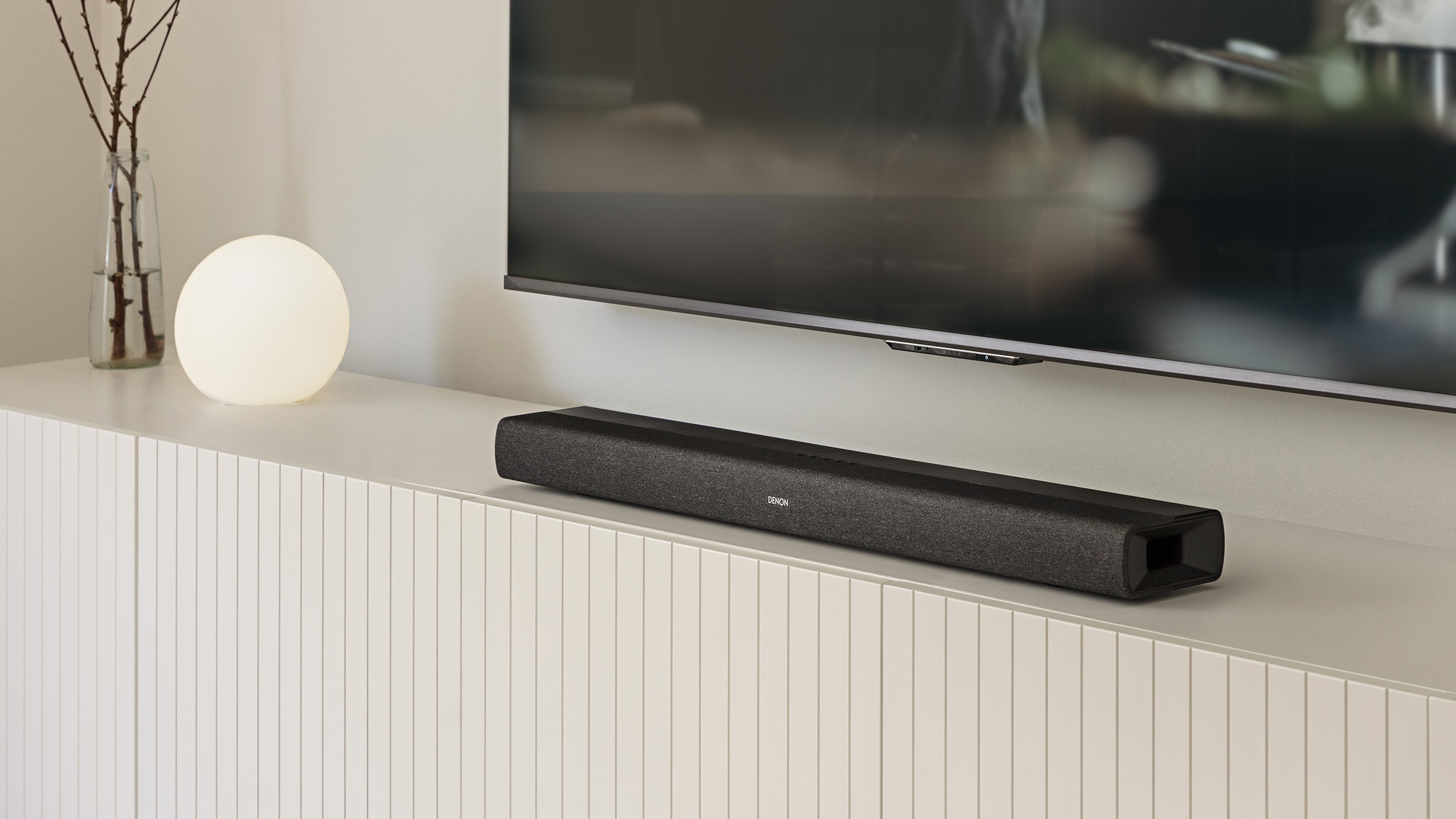
Denon DHT-S217 review: features
- 2.1-channel Dolby Atmos-compatible sound
- HDMI eARC with 4K and Dolby Vision HDR pass-through
- 3-level Dialog Enhancer control
Denon’s ultra-slim DHT-S217 is a basic 2.1-channel design that combines front-firing pairs of 1-inch tweeter and 3.5-inch “racetrack” woofers sited at the extreme ends of the meter-wide ‘bar with a pair of down-firing 3-inch (round) “subwoofer” drivers.
Denon specifies Dolby Atmos compatibility, though there are no up-firing “height” speakers, nor a dedicated center-channel speaker. Available sound modes include Movies, Music, and a dynamic range-compressing Night, while a three-level Dialog Enhancement feature accentuates voices in the sound mix.
The main input is an HDMI eARC port, which funnels sound from a similarly equipped smart TV and supports PCM as well as Dolby audio streams, including Dolby Atmos. A second HDMI input accepts signals from an outboard source such as a game console or Blu-ray disc player and supports pass-through of 4K video signals with Dolby Vision HDR. There’s also an optical digital port and analog mini-jack input along with a single RCA-jack subwoofer output to connect a powered subwoofer (not included).
Bluetooth wireless audio streaming is built-in, but since there’s no Wi-Fi compatibility, AirPlay and Chromecast are not on the menu.
The Movie, Night, and Music sound modes plus a Pure option that routes sound through completely unprocessed are selectable via the supplied small remote control, as are Volume and Bass up/down button pairs and direct input-select keys for each physical input plus Bluetooth wireless.
Like most soundbars, the DHT-S217 includes a remote-learning feature that lets it “map” its remote’s commands to the keys of another controller – typically, your TV’s. Control-over-HDMI is also enabled, which will achieve the same purpose with most modern TVs without the “learning” process – most people will use this, since it means you'll have control of the soundbar from your TV's remote the moment it's plugged in.
- Features score: 4/5
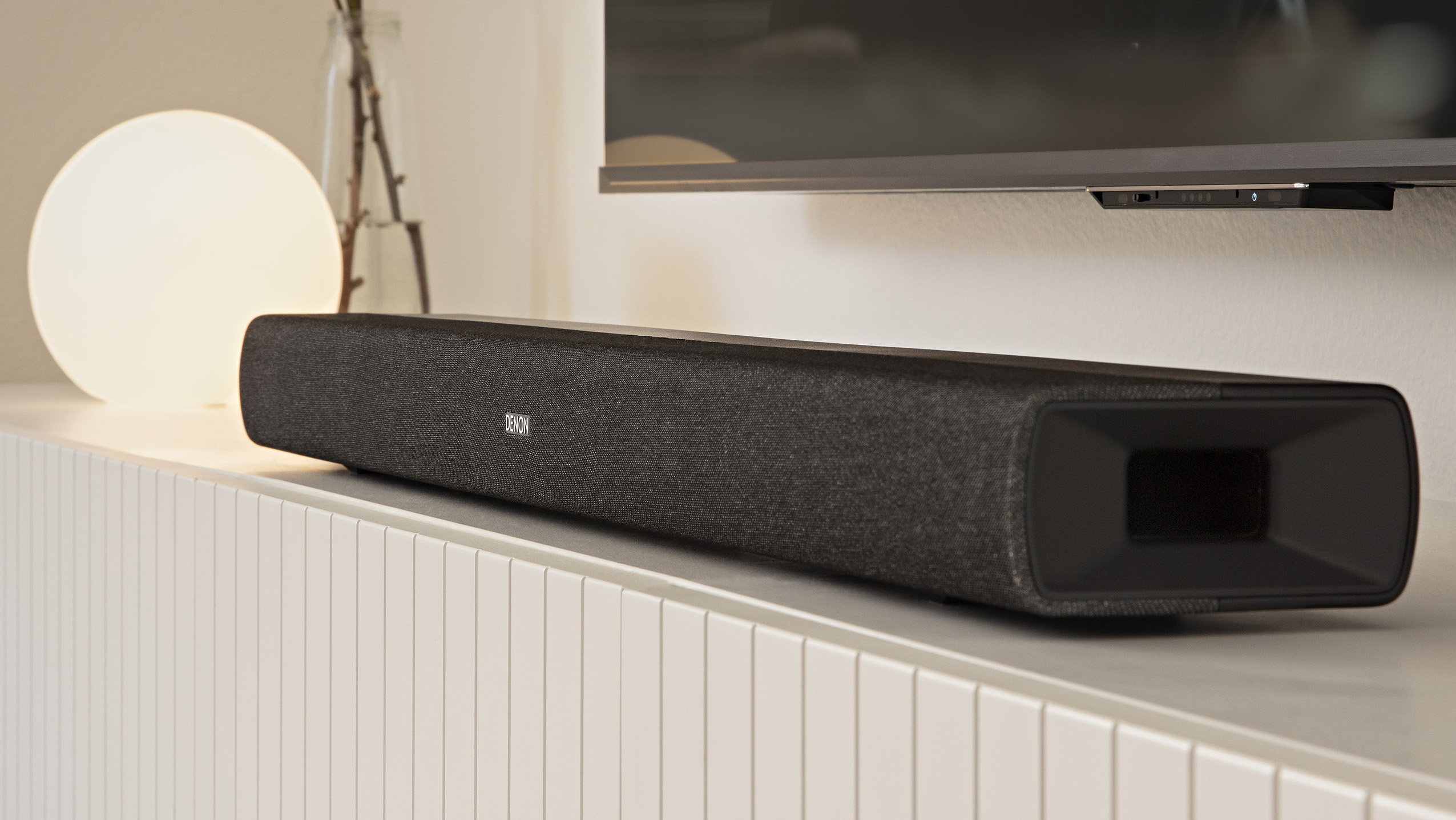
Denon DHT-S217 review: sound quality
- Good dialogue clarity
- Sound hardens at louder volumes
- Minimal Atmos height effect
I love soundbars because they offer a substantial, user-friendly upgrade from the dismal sound quality of most TVs for those who cannot or will not accommodate a multi-speaker surround layout. (For example, some years back I equipped my dad with a modest soundbar and he was mightily pleased, whereas the likelihood of him accepting a multi-speaker system was roughly the same as him getting a face tattoo.)
I also hate them precisely because they are not discrete multispeaker systems and, despite the increasingly clever and effective digital signal processing used in the best soundbars, they cannot fully compete with such.
Denon’s DHT-S217 is a case in point. To prepare myself for soundbar reviews, I always spend a few hours watching casual TV using my 65-inch Sony OLED set’s on-board audio, which, while better than most, is still underwhelming.
Plugging in the DHT-S217 following this exercise was an uplifting experience: bass, volume, natural-sounding voices! The Denon filled out at least an extra octave of sound, giving dialogue its full heft and body and providing at least a solid sketch of bass with music and the underpinnings of such soundtrack effects as explosions and roaring engines. Overall, Denon’s ‘bar added perhaps 20dB of clean volume level, playing loud enough to fill my 300-plus-cubic-foot studio with listenable sound.
But – and with soundbars there are always “buts” – though the Denon’s sound was clear and intelligible, male voices took on a very mild “honky” cast. More significant was the disconnect between the bar’s bass and its reproduction of mid-range and treble frequencies.
One example of the latter: the low-frequency elements of sounds like street-noise or baseball game crowd ambience came across as a discrete, muffled rumbling. This could be mitigated by turning the Bass control (which offers 8 steps altogether) below the halfway point, however, and the issue was much less evident with the master volume set below the Denon’s 60-step overall range.
The DHT-S217’s three sound modes – Movie, Night, and Music – are distinct. (A fourth, Pure, routes unprocessed audio direct from the source.) “Night” cuts bass, accentuates upper-midrange, and compresses dynamic range by emphasizing soft sounds and limiting loud ones. It’s ideal for “the baby is sleeping” TV viewing sessions, but greatly reduces the impact of movie soundtracks, and noticeably colors voices and music. “Music” appeared to maintain basic stereo presentation, with tone shaping to enhance bass and, to a lesser extent, mid-treble sound for a more impactful music presentation.
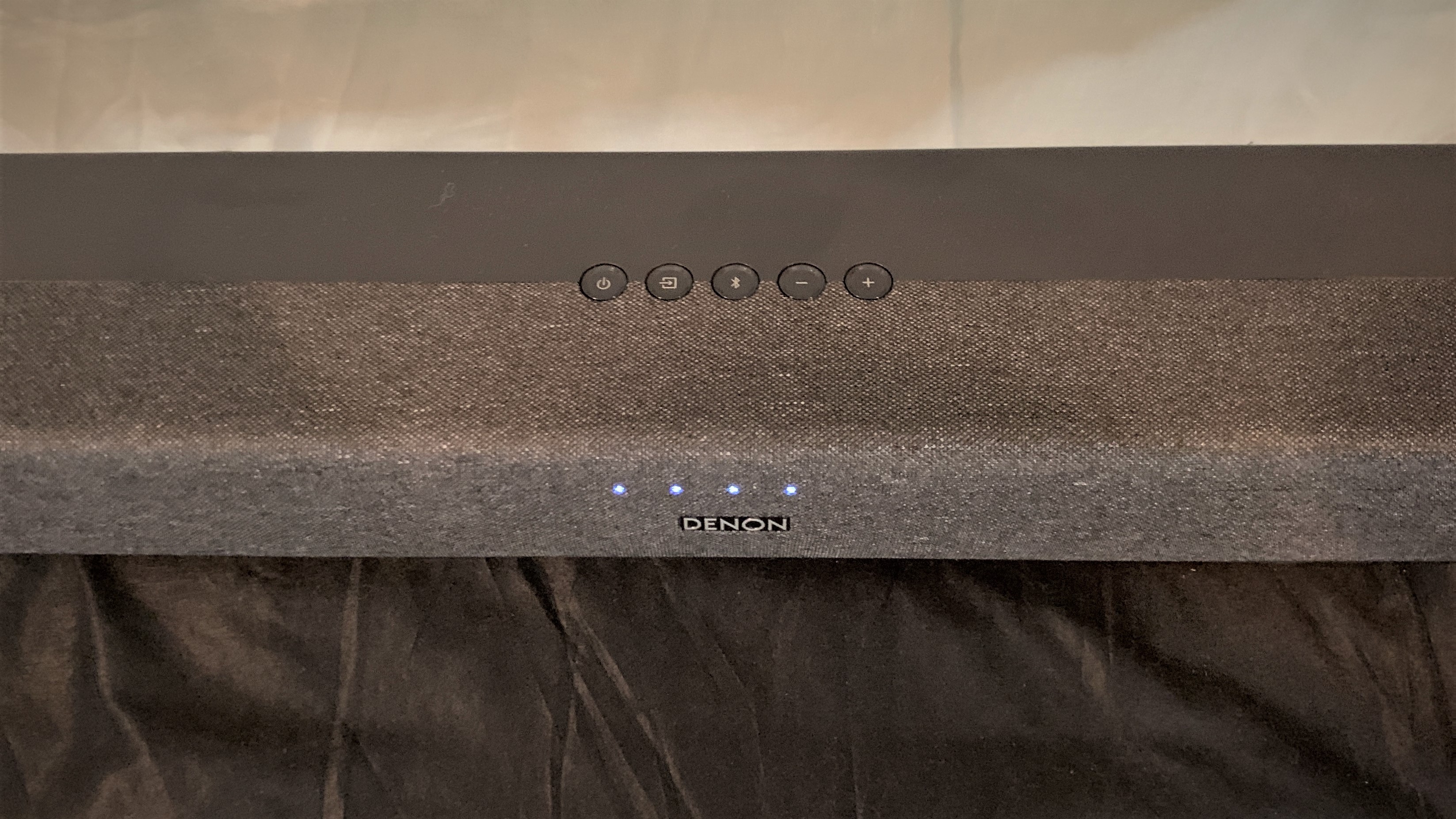
Overall, I found casual music listening with the Denon to be enjoyable. Its sound was full and reasonably balanced, with enough bass extension to render most music genres with satisfactory depth.
Streaming Bonnie Raitt’s latest release, Just Like That (via ChromeCast to my Sony TV’s HDMI output), I heard a mostly natural rendition of her familiar voice, and there was enough bass (though still a bit boomy and disconnected) to easily follow the musical thread even through the lower notes. When I compared the Denon to a pair of powered speakers some eight times its modest cost, the contrast was obvious, with the far more expensive speakers sounding deeper, fuller, and more open in the midrange, and also with a sparkle that the Denon only hinted at – but not embarrassingly so.
The Movie listening mode proved very similar, but with a bit more bass emphasis and a little boost to the voice range to enhance dialogue. On a related note, the remote’s Low/Medium/High Dialog Enhancer control can really push voices to the fore, especially at the High setting.
As for surround and spatial effects, I heard disappointingly little of either. Relative to the Music mode, Movie made the sounds a little wider and a shade taller, but these effects were far from dramatic and nothing like the “bubble” of ambience the best Dolby Atmos soundbars can achieve.
With either movies and TV or music the DHT-S217 could play loud enough in my relatively sizeable space to satisfy most tastes. Even so, over the top few notches of its volume range the sound hardened somewhat with challenging material like massed voices or dense piano music, while the bass became noticeably “tubbier” at the same extreme.
- Sound quality score: 3.5/5
Denon DHT-S217 review: Design
- Compact form-factor
- Included remote control
- Front-panel LEDs
The DHT-S217 is finished in the usual black plastic, but with a slightly nubbly black fabric grille covering its forward half that lends it a considerably higher-end look and feel. Four push buttons are set into the top panel’s center for power, input-select, Bluetooth select, and volume up/down functions, while Denon’s palm-sized remote control adds direct-input access and selection of the ’bar’s sound modes.
Two keyhole slots on the rear surface facilitate on-wall mounting when used with the included mounting pads. Foot-pads on the bar’s bottom lift it a half-inch or so and provide clearance for both the down-firing “subwoofers” and the input and power connections (also located on the bottom as is usual with super-slim soundbars).
An array of five LEDs communicate power status, input, audio format, and sound modes via a combination of number and colors. There are at least 18 possible combinations here, so you’re going to have to keep the (downloadable) owner’s manual nearby if you plan to switch modes often.
- Design score: 4/5
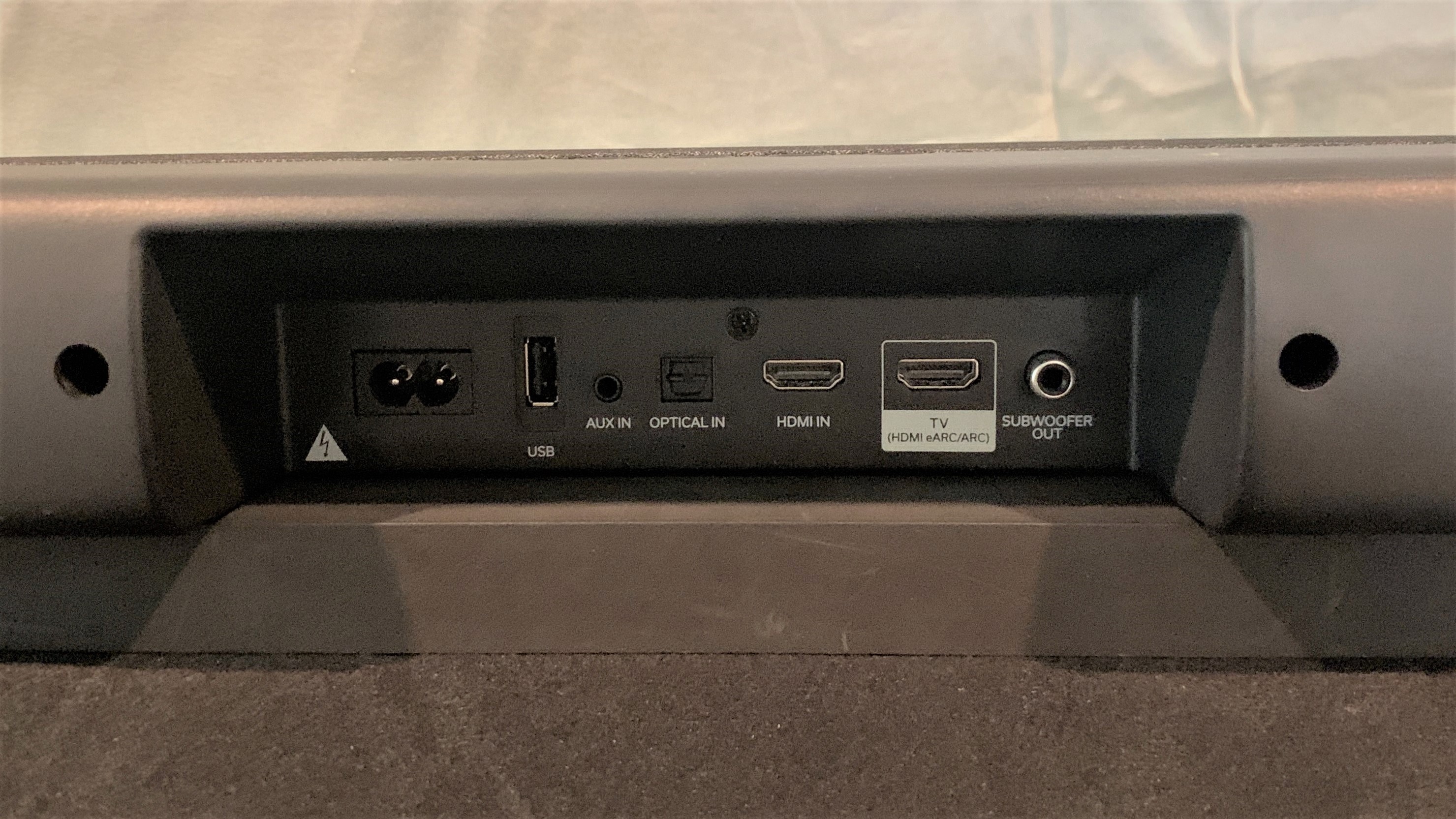
Denon DHT-S217 review: Usability and setup
- HDMI eARC eases setup
- Wireless Bluetooth audio connection
- LED display offers limited feedback
Setting up the DHT-S217 is merely a matter of connecting sources and power. I used the HDMI ARC output from my TV, which seamlessly directed audio, including Dolby Atmos soundtracks, to the soundbar without issue. (This is as good a spot as any to note that, like many soundbars, even substantially pricier ones, the DHT-S217 does not decode DTS soundtracks.) Making a Bluetooth connection from my iPhone was equally smooth, and the audio quality was fine.
Operation using the supplied remote control was straightforward. However, the lack of distinct differences between the Music and Movie modes, and the DHT-S217’s rather occult five-LED display did not make keeping track of settings particularly easy, though the LEDs do provide a fairly coarse indication of Volume and Bass settings. Like most soundbars, Denon’s includes a remote-learning routine so that you can use another handset – usually your TV’s – to command it if needed.
- Usability and setup score: 4/5
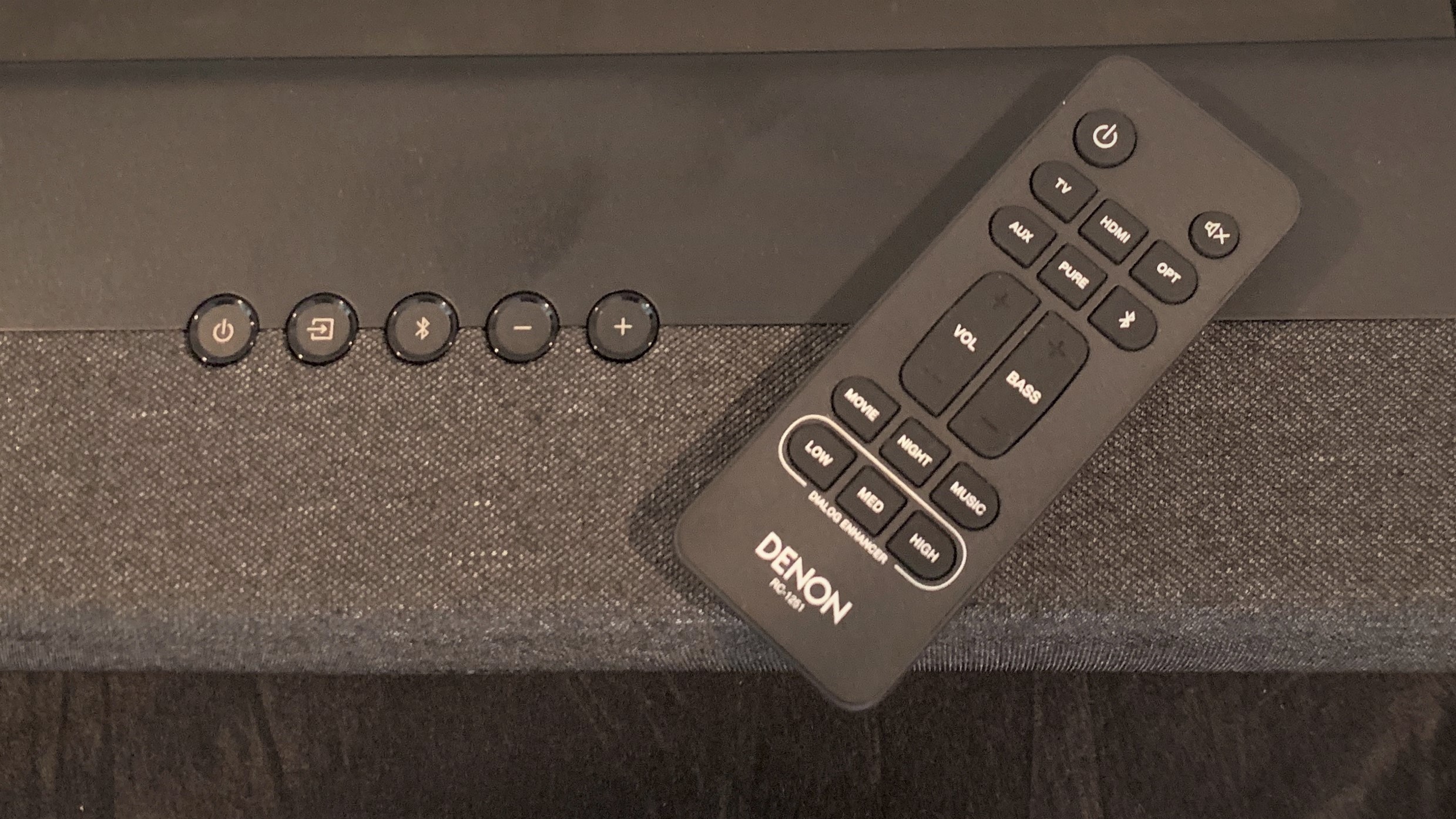
Denon DHT-S217 review: Value
- Good value for an Atmos soundbar
- Same-price competition comes with subwoofer
- Can get Wi-Fi audio for slightly more money
With an MSRP of $249 / £249 / $AU370, the DHT-S217 is a solid value, competing well on both performance and features with other 2.1-channel ‘bars. The Denon’s very good musical balance and fine intelligibility help to compensate for its lack of an included subwoofer, which several competitors include at similar prices. (It does have a sub output, so you can add your own.)
The DHT-S217 also claims Dolby Atmos compatibility, which is unusual at this price point, though its Atmos spatial delivery proved modest at best. Also, moving up to the $350-$400 range opens a range of 3.1-channel soundbar options, including models with companion subwoofers, streaming-audio via Wi-Fi, and more.
If this is your budget, and you want to make sure you're getting as much from streaming Dolby Atmos movies online as possible, the Denon DHT-S217 is hard to beat. But if you can stretch to a higher budget, you'll get more from your sound.
- Value score: 4/5
Should I buy the Denon DHT-S217 ?
| Attributes | Notes | Rating |
|---|---|---|
| Features | Dolby Atmos, HDMI passthrough, Bluetooth… a good menu for the money. | 4/5 |
| Sound quality | Good dialogue clarity and overall sound balance. Not much Atmos spatial effect. | 3.5/5 |
| Design | Compact design with basic front-panel feedback. | 4/5 |
| Usability and setup | Easy setup via HDMI eARC connection. | 4/5 |
| Value | Low price for a Dolby Atmos soundbar with good sound balance. | 4/5 |
Buy it if…
You want a super-slim soundbar
The Denon’s compact, all-in-one form factor makes it a good choice for setups where you don’t want it to visually dominate, and you don’t want a separate subwoofer.
You don’t want to spend too much
The DHT-S217 is one of the more affordable soundbars options on the market from a proven audio brand.
You want Dolby Atmos
The DHT-S217 is possibly the least pricey soundbar on the market to list Dolby Atmos processing among its feature set.
You need HDMI passthrough
Got a TV with a limited number of HDMI ports? The fact that you can still connect a video device through this soundbar might be what wins it a place in your home.
Don't buy it if…
You want deeply immersive surround
There are no upfiring or side-firing drivers, no rear speaker option, and virtual surround efforts are minimal.
You expect deep bass
While the ‘bar features bass drivers, you’ll need to add your own subwoofer to its sub output connection to get a high-impact bass.
You want Wi-Fi streaming
The lack of Wi-Fi means no AirPlay or Chromecast – Bluetooth is the only option for wireless audio streaming.
Also consider
Sonos Ray
With built-in Wi-Fi, the least expensive Sonos soundbar has an edge on the Denon when it comes to wireless streaming. The Ray lacks HDMI connectivity, however, which also means there’s also no Dolby Atmos support.
Sony HT-S400
Sony’s best cheap soundbar system is only slightly pricier than the Denon and it comes with a separate subwoofer for more impactful bass. For the extra money you don’t get Atmos, however, which is an area where the Denon distinguishes itself.
Sonos Beam (Gen 2)
Sonos’ step-up soundbar from the Ray, the Beam matches the Denon in delivering virtualized Dolby Atmos along with HDMI eARC connectivity and also has Wi-Fi streaming. It costs twice as much, though, and lacks the Denon’s HDMI passthrough, but it's just a bigger, meatier more immersive sound from a single bar (ie, no subwoofer).
- First reviewed: September 2022
- How we test: read TechRadar's reviews guarantee
Daniel Kumin has written about video, audio, and music technologies for more than three decades, for numerous major magazines and web destinations, and consults in the AV and other industries. He was originally trained as a composer, in case anyone wants to commission a string quartet.
